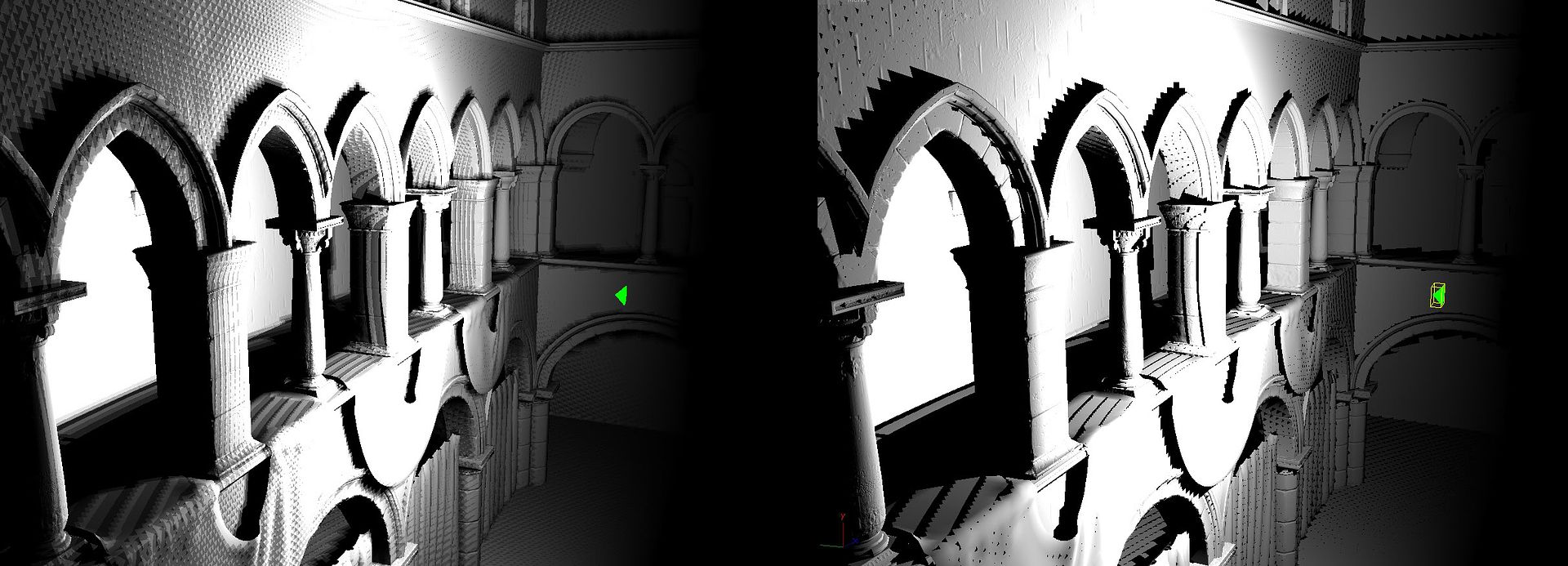Quote:How many lights are you targetting for this operation?
About 16 per fragment.
Quote:How many lights are you targetting for this operation?

Quote:Just for testing, try using a super high resolution paraboloid map and see if the situation improves (i.e. is more responsive to the offset).
Quote:Have you considered doing software tessellation? All you are trying to do is to have a shadow map generation technique, so you only need to interpolate the positions within the triangle, which should be fairly quick. You would only need to create the higher resolution geometry once for static objects, so it could be a realtime solution. What do you think?
Quote:Original post by Viik
during shadow map render, vertices are mapped into parabaloid space, but during shadow term calculation fragments are used and they are mapped much closer to a "perfect" paraboloid than vertices
Quote:Original post by venzonQuote:Original post by Viik
during shadow map render, vertices are mapped into parabaloid space, but during shadow term calculation fragments are used and they are mapped much closer to a "perfect" paraboloid than vertices
So why couldn't you just (during shadow term calculation) calculate the paraboloid mapping per vertex and use the interpolated value in your fragment shader for the shadow map lookup and depth comparison?
Quote:Original post by Jason Z
That is an interesting suggestion - I think it would work, and it would most likely be more efficient as well since you are calculating the paraboloid position in the vertex shader instead of the pixel shader.
Have you tried something like this before?